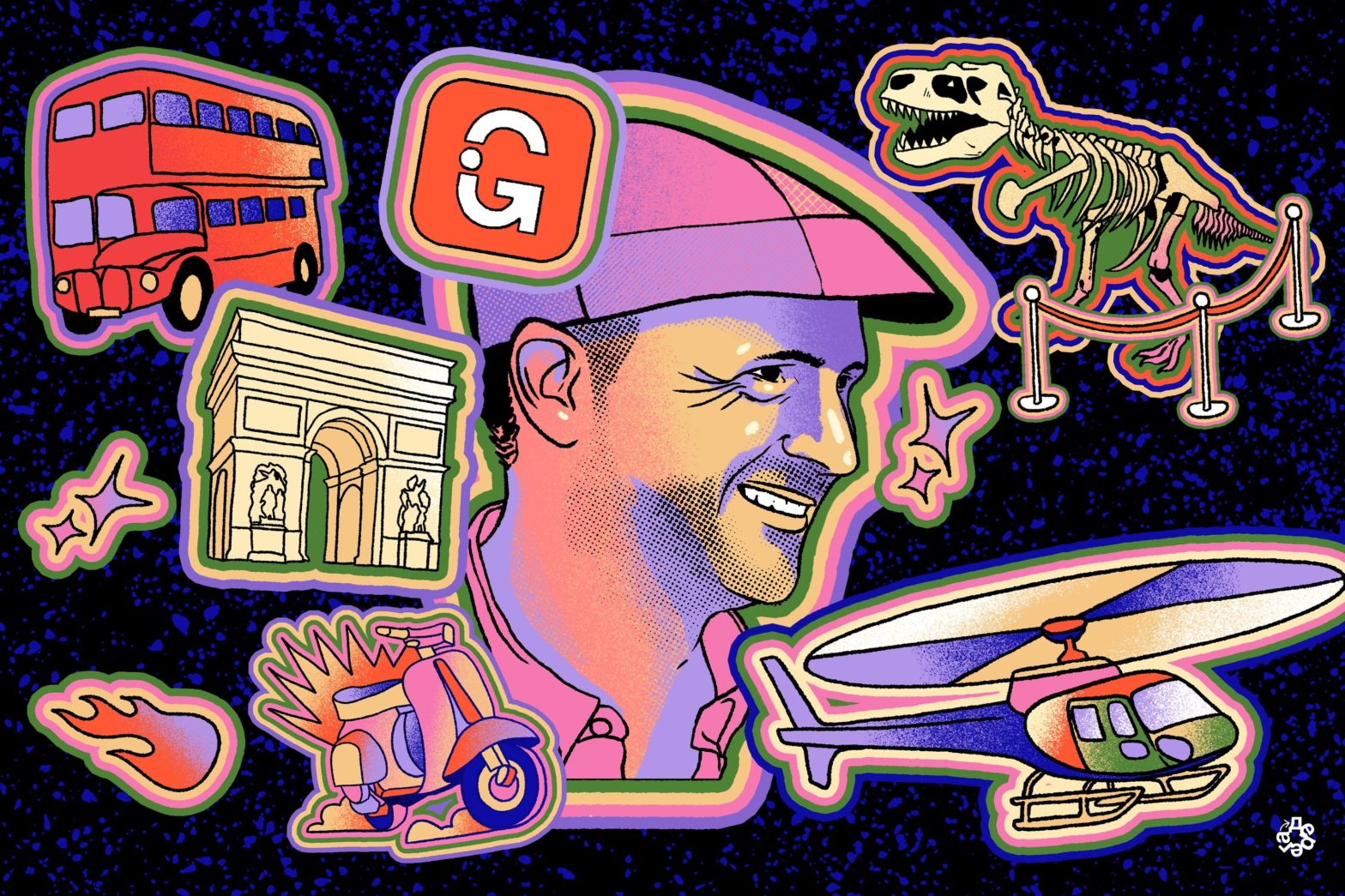Mastering e-commerce growth: a deep dive into ROI Hunter’s product

The genesis of scale: solving e-commerce advertising's core challenge
What early insights shaped ROI Hunter's position as a Meta business partner, particularly in addressing the challenges faced by e-commerce advertisers at scale?
ROI Hunter‘s story started in the very early days of Facebook advertising. Our founder, Karel, was running one of the first agencies in the Czech Republic to sell Facebook ads, even before the self-serve platform was widely available in the region. Through that experience, a critical market gap became clear: Meta’s platform lacked the tools to help advertisers manage large, complex product catalogues effectively. That observation became the foundational idea for ROI Hunter, which was then validated in a Meta accelerator program.
The initial goal was simple but powerful: enable the creation of individual ads at scale directly from an e-commerce feed. We wanted to make it possible to publish hundreds or even thousands of ads from a single catalogue, focusing entirely on achieving an unprecedented scale.
When Meta launched dynamic product ads with similar capabilities, how did ROI Hunter adapt and maintain a unique value proposition?
It might seem counterintuitive. Meta released a product that appeared to do exactly what we were focused on, and you could think that would be the end of our business. But it actually presented a natural progression for us. Meta builds products for millions of advertisers of all sizes, from the smallest e-commerce store to the largest enterprise. That’s why they’re so successful. In contrast, partners like us specialize in meeting the very specific, nuanced needs of larger advertisers who are managing incredibly complex catalogues.
When dynamic ads emerged, they integrated seamlessly into our framework. It allowed us to focus on the next layer of value: enhancing and improving the creatives and providing deeper strategic control, which is where we believe we can add the most value for high-volume advertisers.
So, how would you define ROI Hunter's ideal customer and the specific problems you aim to solve for them?
Our ideal customer typically operates with at least tens of thousands of SKUs in their catalogue. The primary challenge for a media buyer at that scale is that the product catalogue often feels like a fixed, unchangeable entity. It’s exceptionally difficult to grasp the subtleties of thousands of individual products that vary in price, newness, or status as a bestseller. Much of this vital information has historically been invisible to advertisers directly on Meta’s platform.
ROI Hunter’s core objective is to empower the marketer to be strategic and deliberate in how they promote such a large and diverse catalogue. That deep understanding of individual product performance is precisely what helps them achieve superior results.
The dynamics of continuous optimization and creative merchandising
How does ROI Hunter ensure continuous engagement, given that initial feed optimisation might seem like a one-off task?
That’s a really good question, and it gets to why our platform is essential for certain industries. The reality of commerce today is that things are moving incredibly fast, especially in sectors like fashion where new products are constantly coming in and seasonality changes rapidly.
A significant challenge arises because algorithms naturally prefer known products, the ones that have already accumulated performance signals. This creates a lag in refreshing the pool of actively used products, a problem ROI Hunter is designed to solve. We see two really happy groups of customers: fast-fashion brands with constant new arrivals, and very large retailers or marketplaces with millions of SKUs, where a huge portion of their catalog gets almost no visibility.
For them, it’s about surfacing those hidden gems and telling the algorithm where to put its attention. It’s empowering when you realize, as a user, that you don’t have to leave everything for the algorithm to test. It’s about being intentional and maintaining control. I always say that products are the bloodline of e-commerce, right? It’s the most important thing.
What issues arise when advertisers neglect continuous attention to their product feeds, and how does ROI Hunter address these?
Without that attention, advertisers frequently encounter significant issues. It’s common for 50% of impressions to be directed towards only 1% of items, or for unwanted products to disproportionately surface in ads.
Our platform provides crucial visibility and the ability to directly edit the product feed. We view dynamic ads as much more than just a creative vehicle; we see them as a comprehensive shopping experience. It’s not solely about the creative itself, but fundamentally about the product being advertised.
In our view, picking the right product constitutes half of the creative process. How you then “dress” that product (packaging it with deals or integrating broader branding) is akin to the merchandising strategies in a physical store. When advertisers embrace that holistic view, the format’s potential for impact expands considerably. Our feature set is designed to ensure that dynamic ads become the best performing and most visually appealing format available.
Innovating for performance: the journey of catalog video ads
Can you describe the product development journey for catalogue video ads, from its early discovery challenges to its eventual success?
That’s a fascinating story. This was actually the very first product I worked on at ROI Hunter, back when I was still in customer success. Everyone in the industry knew video was the “next big thing,” and Meta had been developing its own versions for years. We started building features for it, but the initial alpha versions just weren’t performing. Despite that, we persisted with rigorous testing. Then, quite suddenly, the performance metrics aligned and it just started to work.
From a product management perspective, that’s the ultimate lesson. A feature can be technologically brilliant, but if it fails to deliver a better ROI, advertisers simply will not use it. The ultimate measure of a feature’s efficacy is its performance. So, whenever we develop something new, we A/B test it to definitively prove it delivers tangible results. If it works, we embrace it and invest more.
How crucial is client partnership in developing and testing new features like catalogue video?
It’s absolutely paramount. We often start with rapid prototyping, sometimes just organizing ideas in a spreadsheet with a select group of customers. The goal is to quickly find out if a new feature brings them the results they want.
The customer’s own source of truth is what matters. They have to be able to confirm that a feature delivers good ROI for them, according to their KPIs. If a product isn’t working for them, they won’t adopt it and they won’t pay for it. It’s that simple. This collaborative approach ensures our partnerships are true win-win scenarios.
What are the key features and benefits of catalogue product video that make you particularly proud?
The feature provides a templating library that allows users to build distinct styles for their catalogue items, which are then applied to existing product images to generate compelling videos. What has proven particularly effective is combining a brand background video, which imparts a specific “vibe”, with static product images. Advertisers are consistently seeing a genuine uplift of 15-25% in their Return on Ad Spend (ROAS) by leveraging this.
It’s important to note that catalogue video doesn’t aim to replace static images, but to enhance creative diversity. It allows more branding messages to be conveyed within the same dynamic ad format, extending its utility beyond just lower-funnel objectives.
The future of advertising: cross-channel strategy and AI as the prompting interface
How has ROI Hunter decided to expand to new channels like Snap and Google, and what's the strategic thinking behind this multi-channel approach?
I’ll be really transparent here. We’ve been in business for 11 years, and we’re still here, but we’re also not a unicorn. What comes with that is that you try different things, and some work better than others.
Our decision to expand is driven by a clear observation: our core product and business processes can operate effectively across various platforms. But it’s fundamentally about simplifying the complex landscape for the marketer. Transitioning from Meta to Google, for example, is often challenging due to different team structures and tech stacks.
While Meta remains our core focus, our partnership with Snap is incredibly significant, particularly in regions like the Middle East. We have large advertisers there who are actively shifting budgets to Snapchat and asking for the same sophisticated features they use on Meta. That’s why it makes sense. We are deliberately building our tooling with a cross-channel architecture so that tasks like creative development and product analytics can seamlessly support multiple channels.
Speaking of other channels, are you integrating with TikTok?
TikTok is undeniably important. Across the world, it’s frequently the second choice for advertising, especially for younger audiences who are gaining more purchasing power.
It’s particularly interesting because as Meta itself shifts more towards video, advertisers who have invested in developing compelling video assets can more readily port that content to TikTok. Mastering video has been one of the toughest challenges for advertisers, but those who succeed are demonstrably winning.
We are currently in the alpha stage of our integration with TikTok, meticulously testing how we can translate our existing capabilities to the platform. We believe advertisers can take valuable learnings from their video efforts on TikTok and apply those insights back to other channels.
How do you envision ROI Hunter's role evolving with the increasing prominence of AI in advertising?
Our vision is deeply intertwined with AI. In the early days, the Meta platform was very manual. Today, its advanced algorithms have automated a significant portion of that work. In this new era of algorithmic dominance, ROI Hunter’s precise fit is as the prompting interface for these sophisticated systems.
Advertisers once lamented the “black box” nature of algorithms, but now there are clear methods to control and guide them. You can specify the desired results, the creative output, and the specific products to focus on. This gives advertisers a distinct advantage over just handing Meta a product catalogue and hoping for the best. It’s much like giving a detailed prompt to ChatGPT to get a superior result. Our goal is to be that intuitive interface where you can effectively control these powerful algorithms.
What is ROI Hunter's approach to integrating AI features into its product roadmap?
As SaaS builders, our core responsibility is to seamlessly integrate AI within existing customer workflows. We understand our customers’ fundamental needs and operational processes. This allows us to offer plug-and-play AI benefits without burdening them with the extensive engineering work themselves.
These aren’t isolated actions; they are complex pipelines of information and creatives. The primary challenge for us is to build ahead of the curve, anticipating how these workflows will naturally evolve. This foresight is crucial because testing and achieving tangible results in our business takes time.
Ultimately, we must meet our users where they are headed, not simply where they are today.
ROI Hunter is a Product Performance Management platform for e-commerce that combines marketing campaign data with business metrics like margins and return rates to optimize product-level profitability. It helps retailers identify top-performing products, automate ad campaigns, and manage creatives across Meta and Google. Founded in 2014, it’s now a Meta Business Partner and serves retailers worldwide.
You can find more information about ROI Hunter here, or talk to Erik on Linkedin.

A martech masterclass, by Francesco Pittarello, former Director of Marketing Technology at Uber
Thoughts on enabling CRM for growth, scaling to new markets and other takeaways from the world's largest ride hailing service.